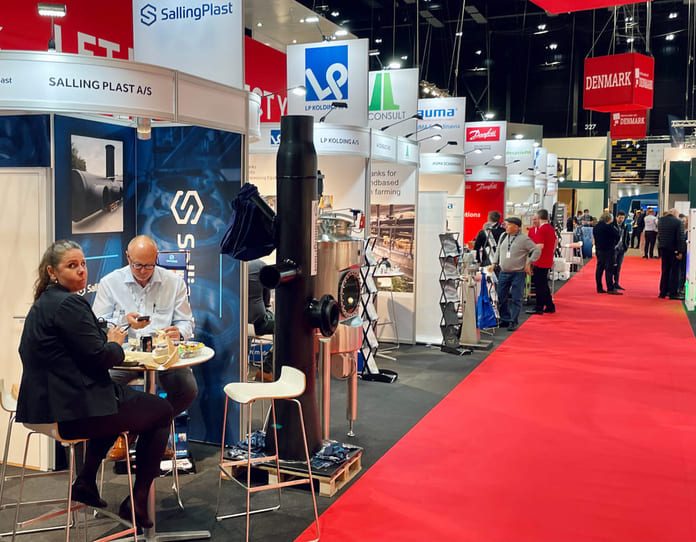When salmon is to be farmed in a new way, it also requires new product suppliers.
It has been two weeks since the Aqua Nor fair was held in Trondheim – in a very news-saturated period. Acquisition battle in NRS, rig cooperation between SalMar and Aker, oxygen scarcity and stockprice collapse for Atlantic Sapphire, debt crisis and CEO resignation in Endúr, export records for salmon and electricity price shocks have been just some of the cases that have taken up space recently.
When the news pressure gradually subsides and normalizes, it is natural to reflect a little on the impressions from this year’s Aqua Nor, the technology fair which is by far the most important in the international aquaculture industry and which, strangely enough, is still only arranged every other year.
Unknown
Apart from the fact that there were probably fewer visitors at this year’s trade fair than previous versions, especially from foreign visitors, and that this was reflected in smaller queues during the lunch breaks and inside the trade fair area, there was one element in particular that I noticed. The large element of, at least for me, largely unknown supplier companies for land-based fish farming.

Here were heaps of suppliers of gaskets, pumps, pipes, tanks and water purification filters. Most had in common that they were Danish. Fish farming using recycling technology has been a Danish specialty for several decades. The Danes presented their own pavilion, their own parade street, with an extensive bouquet of exhibitors.
The backdrop is, of course, the huge investment in land-based salmon farming. As SalmonBusiness has previously reported, there are plans to produce more than 2.4 million tonnes of salmon on land – provided that all projects are financed and realized. And Norway is in the driver’s seat. In this country alone, there are far-reaching plans to build facilities for just over 1.1 million tonnes in production capacity for salmon. In addition, there are all the Norwegian players who are in the process of designing and building facilities abroad.
Shopkeepers
In a surprisingly short time, in fact in just a few years, this has been lifted from being a special Danish niche business to becoming a multi-billion dollar industry.
The Danes are shopkeepers. They are known for their trading skills. Not least in fish, which they have processed and re-exported for Norwegians, Greenlanders and Faroese for hundreds of years. Now they see their average as a technology supplier in a rising industrial adventure. The challenge in the first instance will be to gain attention and visibility in order to position oneself for the many salmon companies that are now opening their wallets.
Thus, it was not the usual gutting machines, feed spreaders, floating collars and workboats that caught the attention of Aqua Nor this time. By all means; they were very much present, but they have been followed by a considerable circle of potent newcomers.
Ocean
When it comes to catching the attention of the media, there were two gentlemen who did better than most in the middle of Aqua Nor week. The high-profile industrial owners Kjell Inge Røkke and Gustav Witzøe shone brightly when they presented their new prestigious collaboration SalMar Aker Ocean. Together, the duo outlined the enormous business opportunities that lie in taking the salmon to sea, “and producing it on the salmon’s terms”, as the SalMar boss likes to put it.

Offshore fish farming has also started, run by SalMar, Nordlaks and NRS. They have all built their own ocean rigs. Much of the subcontracting has gone to Norwegian companies, although steel cutting and welding has largely been carried out in China.
Offshore farming is dependent on the authorities’ blessing in the form of licenses. So far, the catch of permits has been modest, but this may change after the parliament election campaign is over. In that case, there may be reason to expect that another branch of the supplier industry will make a name for itself at the next Aqua Nor, in 2023.
Then my bet is that we will be able to see a large number of more or less well-known supplier companies with products such as sea-going service vessels, large mooring systems, subsea technology, rig yards and strong winches and cranes.

